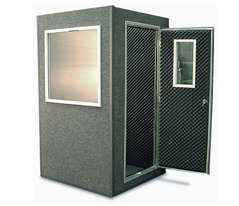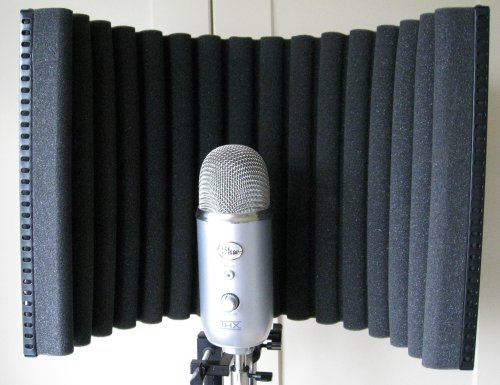Soundproofing and acoustics for podcasters
Talk to any home podcaster or voiceover artist, and they will tell you that one of the perils of recording at home is that of the acoustics of the room used for recording.
Professional recording studios are equipped, at great expense, with special soundproofing material, but the cost of such soundproofing is out of the reach of home podcasters and voiceover talent, and many homes are not best suited for recording voice – painted walls, reflective windows, and non-absorbent wall-coverings will all result in sound waves being bounced around your room and picked up by your microphone.
The second hazard in home recording is background noise – your PC fan, other people in the house, passing traffic, and even a purring cat can all be picked up by your mic, and with many listners using inner-ear headphones, extraneous background noise can be a serious distraction.
So what is the answer? Putting your walls in non-reflective material, closing your curtains and covering your noisy PC with something that absorbs fan noise can all lessen these effects.
A Voice Booth
If you’re serious about recording at home, you may find that a sound booth, is the answer – you can buy a rather snazzy home walk-in voiceover booth from Dolphin Music, but priced at over £3,000 this may be out of your reach.

Home Voiceover booth
Portable Reflection Filter
Rather than going to the expense of treating your room acoustically, there’s a rather handy solution from SE Electronics, the portable Reflexion Filter. Our podcast team’s using one of these at the moment, and reaping the benefits.
Effectievly, this fixes to your mic stand, and near-on eliminates reflection from behind and to the sides of a microphone. It’s great for reducing reflections, echoes and background noise. If you’re recording in a room that has not been acoustically treated, this product could be the answer.

SE Reflexion Filter Project Version with Yeti Microphone
There are two products in the Reflexion family, the Professional and Project versions, the latter being around half the price. These have been scientically created to reduce nasty room noise, and are surprising effective. We’ve reviewed ours here: Reflexion Project Acosutic Filter Review.
We alos note that Maplin has brought out a similar solution – their Portable Microphone Absorber and Diffuser, whch claim to surround your microphone and reduce the transmission of unwanted room influences such as reflections. At the time of writing, this audio diffuser is only available via the Maplin website, and not in Maplin branches. We’ve not tried it.
For more details on the Reflexion Project Filter, see Reflexion at Dolphin Music or Reflexion at Gears for Music.
On a budget
If your budget doesn’t stretch to the Absorber and Diffuser the minimum that you should invest in is a pop shield for your microphone to reduce breath noises as much as possible, and do what you can to “dampen” the sound in your room using curtains, or strategic draping of a duvet (as one of our team did in their early podcasting career!).

Great post. When recording at home one of the most important considerations is soundproofing. Pure soundproofing prevents people through the house from extraneous background noise. This is an important thing to plan for if you’re building your recording room because it’s easier to do with materials inside the walls. I have done my recording room soundproofed with Quietrock soundproofing drywall. It is the most effective and reasonable option if you want to try it out in your apartment. It is easy to install, and cuts out noise by up to 90%. QuietRock soundproofing drywall is available in a variety of models, so you can choose based on your requirements and feasibility as well.
I’ve been using idea #2 except I I’m using the Soundkitz AE-F. It’s been working well so far. I’m not really on the level yet where I can set up a dedicated room but it’s a good idea for those in the same boat just trying to get a better sound in on the mic instead of talking like your recording from the beach. Where everyone is hearing wind in the background and they can’t even hear you.